With most of our communication now moved to virtual platforms, nothing is more important than your mic. The mic is your portal to communicate with your friends, family, and conduct work. Unfortunately, Windows 10 is riddled with audio problems. Luckily, we have compiled a list of tips and tricks to help you boost your mic volume and also improve the quality of your recording quality!
How to improve your mic quality and volume on Windows 10
While some of these ones are simple, they work best when used in conjunction with others. Try out these Windows 10 tips to improve your mic quality for better virtual communication on apps like Skype and Zoom.
Related: Common Windows 10 2004 issues and available fixes
1. Select a default mic
The first thing on this list is also the most important. If you are having problems with your mic, where it doesn’t seem to work in some programs but works in others, this could potentially fix it for you. Setting a default mic ensures that Windows knows which mic you would like to use on all programs.
To set a default mic, follow this simple guide below.
Right-click on the ‘Speakers’ icon in the taskbar and select ‘Open Sound settings’.

From the right-side panel, click ‘Sound Control Panel’.
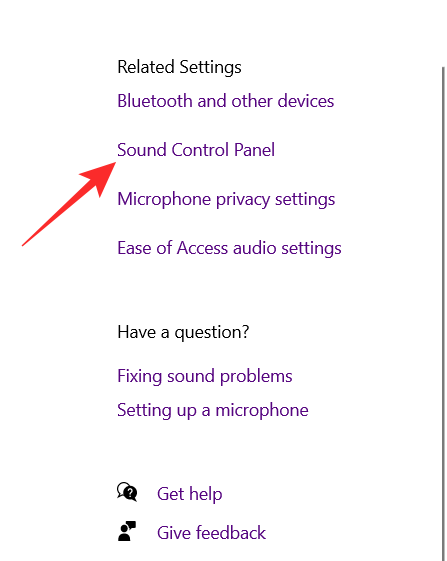
In the new window, select the ‘Recording’ tab from the top panel. Now right click on the mic that you would like to set as your default mic and select ‘Set as Default Device’.
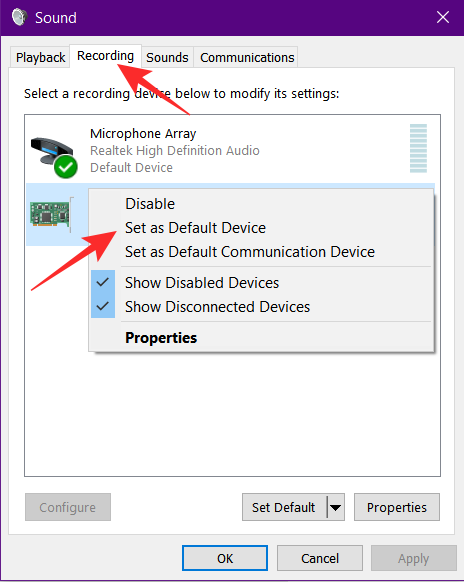
2. Increase mic level
If you feel like people can’t hear you properly when using your mic, it could be because the mic level is set too low. This sometimes happens when other programs take control of your mic and sync the volume with theirs.
To Increase your mic level, follow the same steps as above by going to Sound settings > Sound Control Panel > Recording.
Now double click on your default mic (or the one whose level you want to increase).
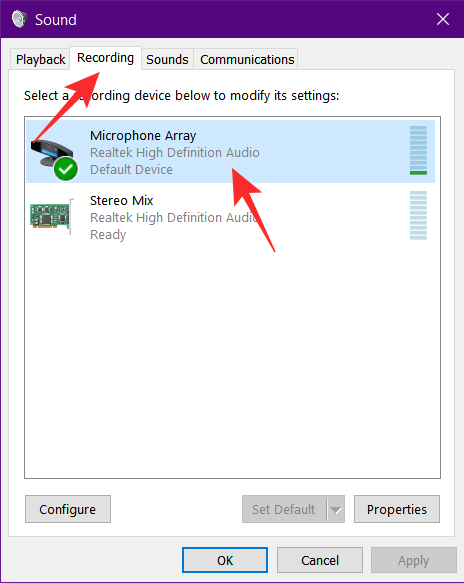
From the top panel select ‘Levels’. Now move the microphone slider all the way to the right, to max out your mic level.
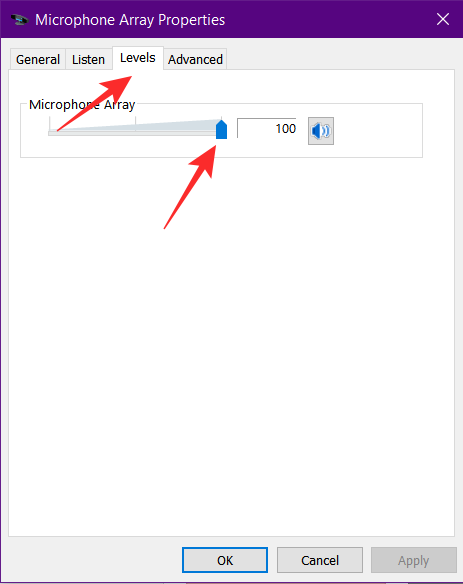
3. Boost your microphone
Some microphones have an added option to boost their levels. If your microphone does, you will see the option right below the ‘Microphone level’. Boosting your microphone level too much can cause a lot of static to be picked up by your mic. So it is important to balance your Microphone boost accordingly.
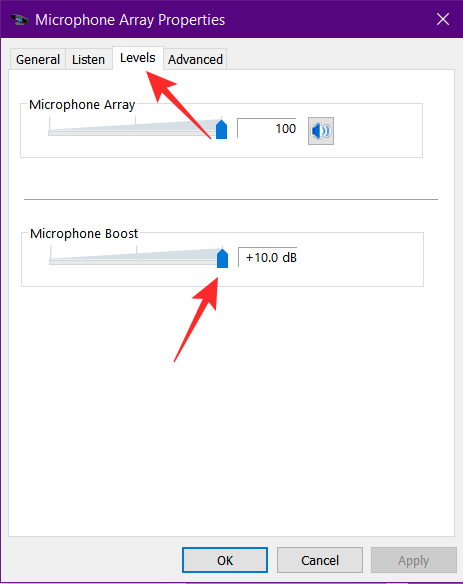
4. Disable enhancements
Windows 10 has some pretty cool audio enhancements. While these work well most of the time, they have been known to malfunction when used on third-party apps. By default, Windows 10 has Enhancements enabled.
To disable your microphone enhancements, follow the above guides to go to Sound settings > Sound Control Panel > Recording. Double click on the default mic that you would like to customize.
Now from the top panel select ‘Enhancements’. Click the checkbox next to ‘Disable all sound effects’. This will remove all microphone enhancements. Alternatively, you could uncheck each of the enhancements.
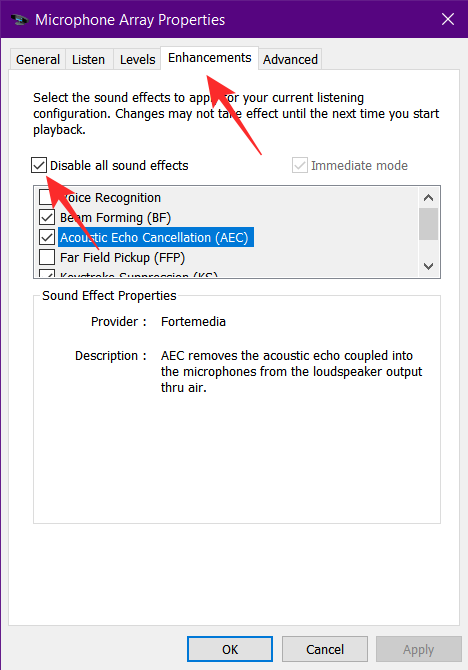
5. Enable FFP if available
As we mentioned above, Windows 10 does have some neat microphone enhancements One of these is Far Field Pickup or FFP. This function boosts the microphone levels to pick up your voice from further distances. If you feel like people cannot hear your voice well on a call, try enabling FFP on your device. Note: Not all Windows 10 devices have FFP.
To enable FFP, go to the Enhancements tab just like in the guide above, and click the checkbox beside ‘Far Field Pickup’. Note: Enabling FFP will automatically disable BF (Beam Forming).
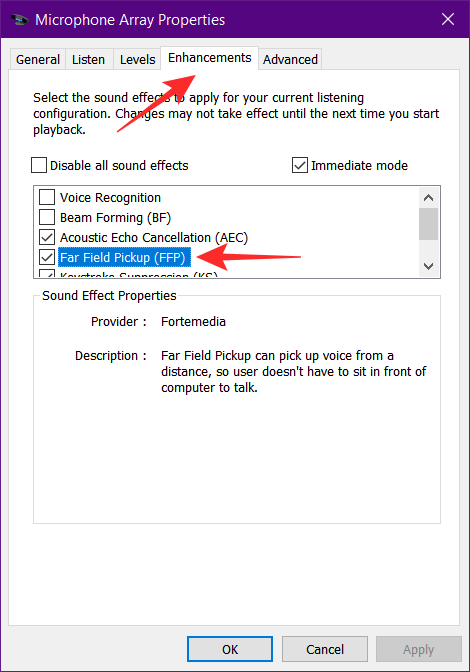
Once enabled, you can even talk from across the room, and your microphone will be able to pick it up.
6. Prevent applications from taking control
Windows 10 has an option that allows applications to take exclusive control of your microphone. The idea behind this is that you do not need to change two volumes. For example, when you change the microphone volume in your skype call, it will automatically change the volume of your computer. However, the problem with this is that it leaves the setting at the one set by the app, rather than what was set by you.
To solve this problem, go to Sound settings > Sound Control Panel > Recording and double click on your microphone. Now select the ‘Advanced’ tab from the top panel. Under ‘Exclusive mode’ uncheck ‘Allow applications to take exclusive control of this device’.
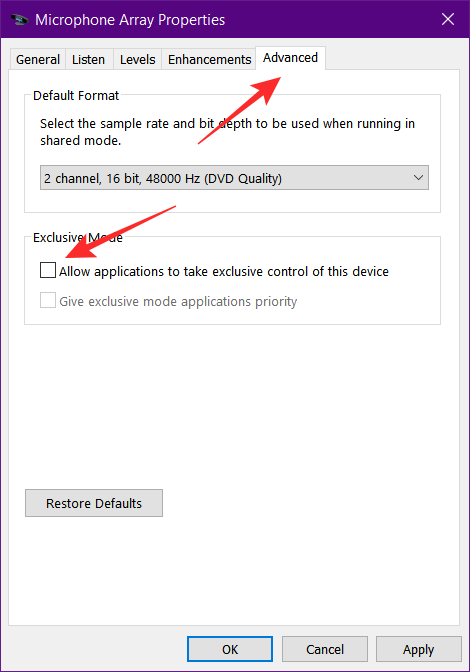
The other setting ‘Give exclusive mode applications priority’ will be automatically unchecked.
7. Change Bitrate to DVD quality
If it’s quality you are worried about, you can increase the bitrate of your mic. However, it should be noted that a higher bitrate means an increase in size. This means that you will need more data to transmit your audio over the internet. However, the difference is quite small, and not something you need to worry about unless you are recording.
To change your bitrate, follow the above method to go to the ‘Advanced’ tab in your microphone settings. Now under Default Format, click the drop-down menu.
The settings you have will depend on your microphone. Basically, the higher the bitrate the better the quality of audio. Select ‘2 channel, 16 bit, 480000 Hz (DVD Quality).
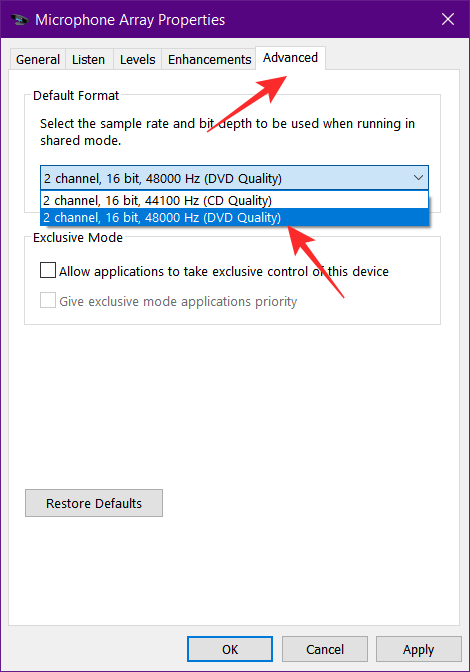
8. Use a third-party app
If the above adjustments just don’t cut it for you, you could go ahead and install an app that lets you boost your mic beyond that of what Windows lets you. However, it should be noted that these apps can only boost your mic to the level that the mic allows. If you do not see any change in your mic’s level, that probably means that your mic cannot be boosted any further.
The app we will be using is called Equalizer APO. It is free and easy to use. Go ahead and download the app to your PC. Run the app as you normally would. When you reach ‘Configurator’ you will be asked to choose the device for which to install the app. Select ‘Capture devices’ from the top panel, then select the mic that you want to boost. If you are not sure, select all of them. You will need to reboot your system for the changes to take effect. Don’t forget to save all your work before rebooting your PC.
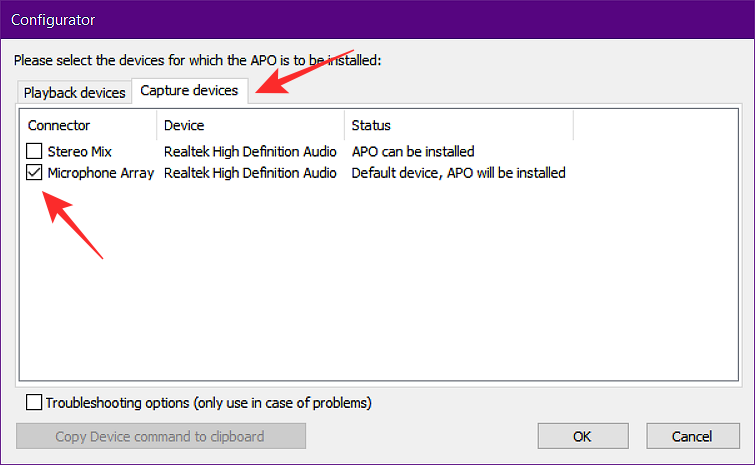
Now launch the app by locating the ‘Configuration Editor’ in your ‘Program files (default). From the Device dropdown menu select your microphone.
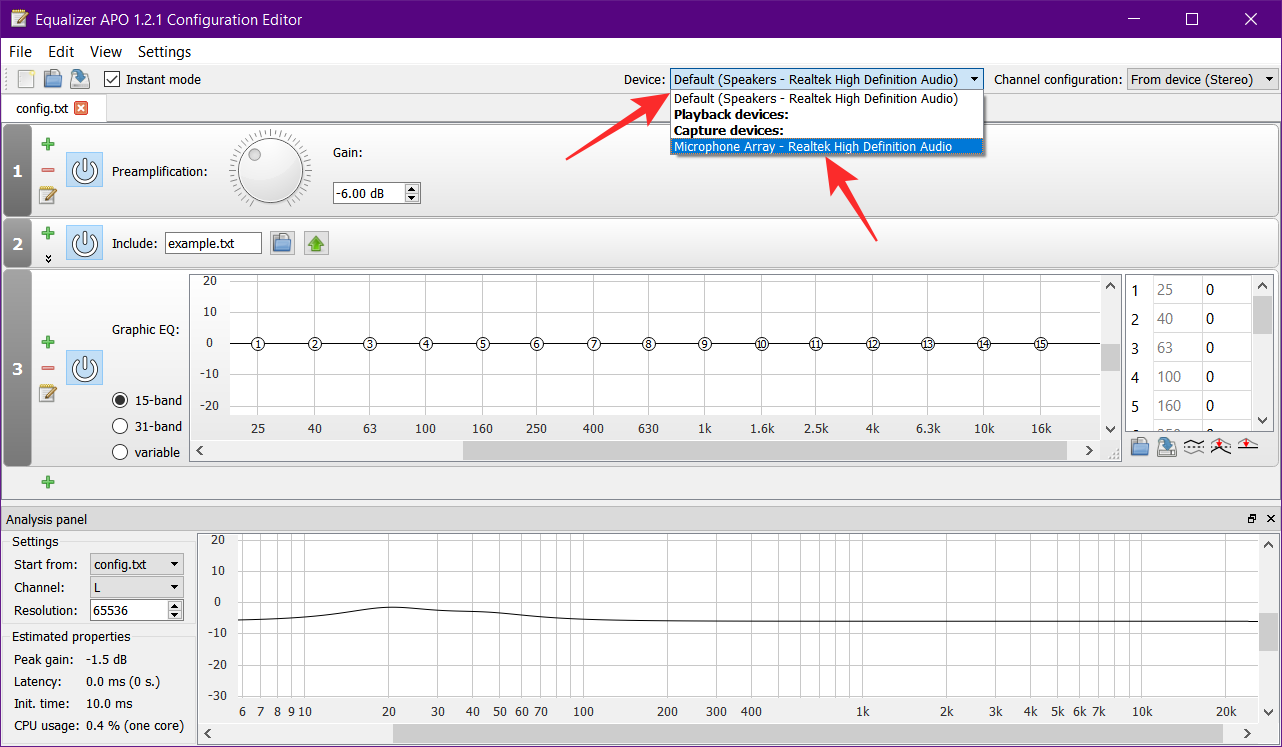
The Preamp should be loaded by default, but if not, click the green + symbol and go to Basic filters > Preamp.
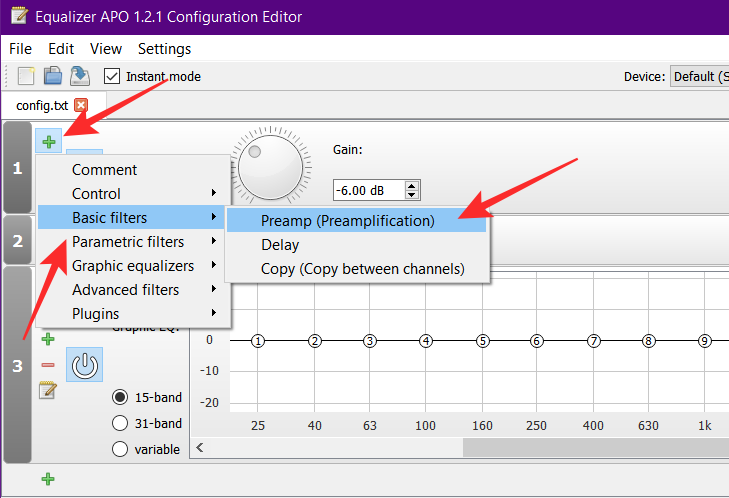
Go ahead and increase the Gain on the knob till you are satisfied with the level. You will see it correspond to the graph below.
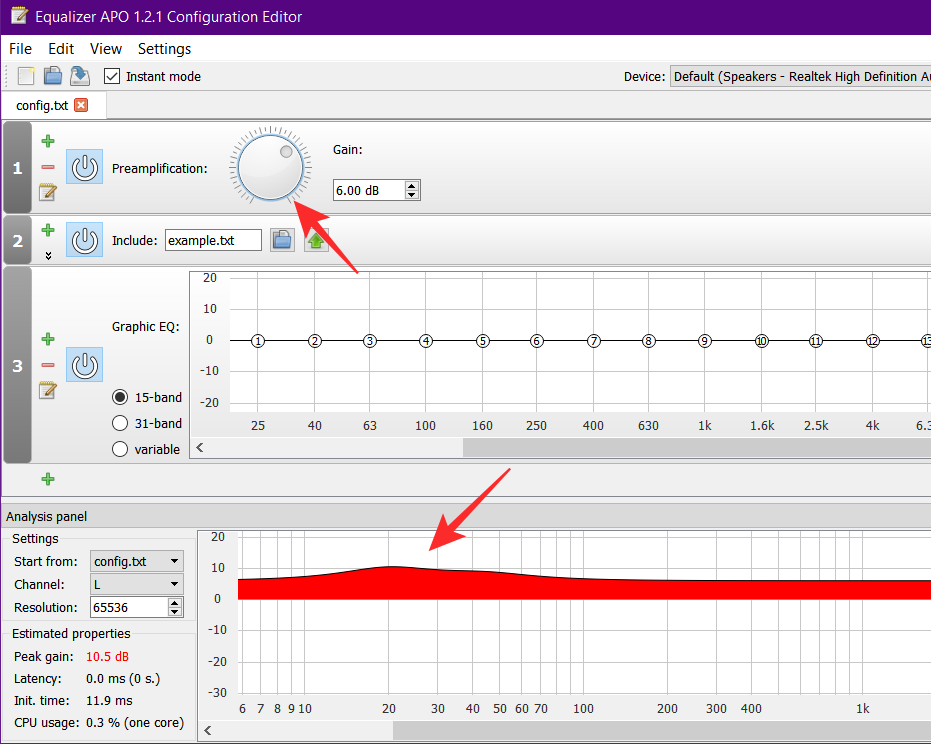
9. Update your drivers
Out of date drivers is the root cause of a lot of problems on Windows 10. Luckily Windows 10 automatically updates your drivers. However, it could be that a particular driver was skipped.
You can manually update your sound drivers quite easily. Right-click on the start menu and go to ‘Device Manager’.
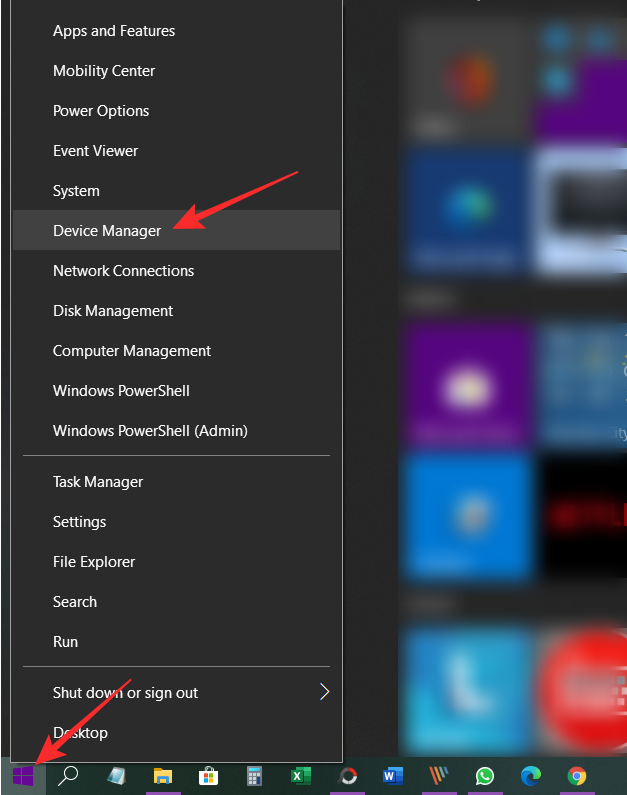
Now go to ‘Audio inputs and outputs’ and right-click on your microphone. Select ‘Update driver’.
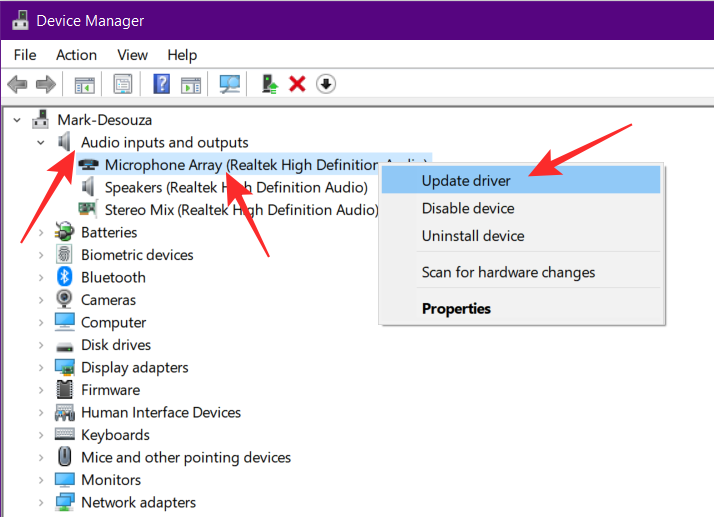
Now select ‘Search automatically for updated driver software’. Windows 10 will check online for the latest drivers and download them for you.

Well, there you have it. We hope this list helped you get the most out of your microphone. If you have any queries, feel free to reach out to us in the comments below.
Related:

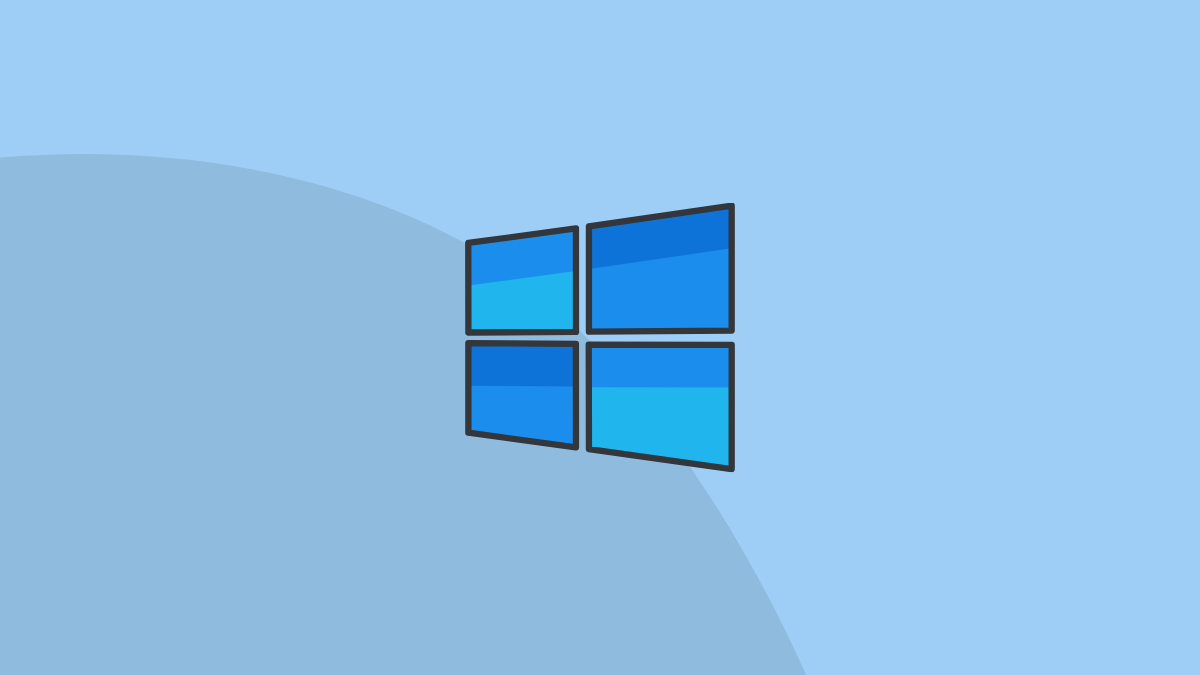










Discussion